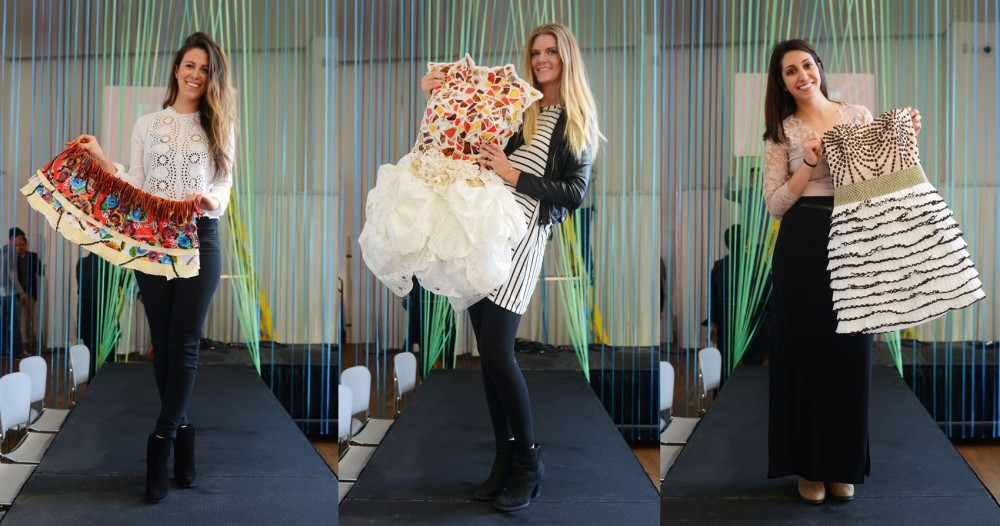At the Eye Candy Design Showcase, you can drink your brew and wear it, too.
University of Minnesota apparel design students created unconventional looks for the design event by meshing food and fashion. Coffee bean appliques are just the start.
Inspired by the art exhibit, “Feast: Radical Hospitality in Contemporary Art,” the students are displaying their outfits at the Weisman Art Museum through May 10.
The gallery is a culmination of works dating back to the 1930s that explore the act of sharing food and drink. Each painting, sculpture and demonstration examines the interplay of hospitality and human nature.
Every work depicts a different perspective on sharing a meal and delves into deeper commentaries on topics ranging from gay rights to fascism.
A&E’s Fashionista sat down with three of the apparel design sophomores — Sophia Gilligan, Sydney Moustakis and Abby Schumaucher — to learn more about their processes leading up to the show.
Summer ‘n’ spice
Gilligan connected with her Mexican ancestry to create her festive look.
Summer after summer, she said, her extended family gathers for family reunions that center on food and conversation. Gilligan said the meals bring people together, and they have good talks while they eat.
“All of us women get in the kitchen and are cooking food in it for hours. It’s one of the most important traditions in my life,” Gilligan said.
Her Mexican background is an influence for her designing as well as her use of materials.
Gilligan’s dress has a flowery, ruffled bodice in rich, vibrant colors. The rest of the ensemble is comprised of traditional Mexican ingredients, such as dried Chile peppers, black beans and cornhusks.
Like a cup of Joe
Moustakis’ dress depicts two people initially meeting one another and bonding over coffee.
“When you first meet somebody, coffee is always an excuse to get together,” Moustakis said.
The cocktail dress is brown and white with appliqued beading and coffee beans. The alignment creates a swirling pattern throughout the
garment.
Moustakis said Eye Candy gave the designers an opportunity to work in a more free-form, avant-garde setting than their previous projects in tailoring and
knitwear.
“Not having much direction was the hardest part but also the easiest part of the project. You just have to guess and go with your gut,” Moustakis said.
Doilies and plates
Schumacher created her dress out of kitchen and household items that are typically used for dinner parties, like plates, cups and table linens. The garment aims to embody the role of a dinner party’s host.
“At first, I was going to create a look for a dinner party guest and use things they would bring, like wine or flowers, and then I decided to challenge myself and do the opposing role,” Schumacher said.
The designer aimed to convey the feelings of a host as he or she leads a party throughout the night. A constricting neckline made of plates and cups represents the stressful nature of hosting a party, yet the playful skirt made of doilies and table cloths represents the whimsical side of the night.
Determined to have a mosaic design, Schumacher set porcelain tiles with grout. After a period of trial and error, Schumacher learned that tiling grout is unsuitable for garment construction because of its crumbly nature. Instead, she edged every tile with the lacy frills of a doily, resulting in a feminine, three-dimensional look.









